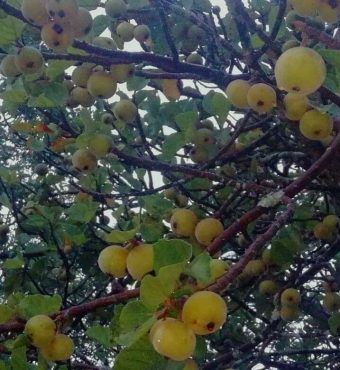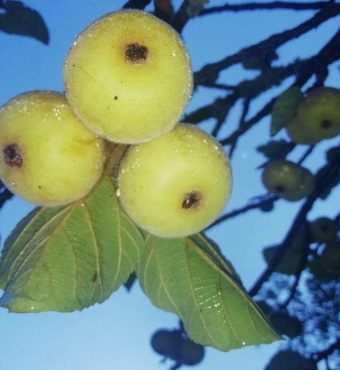

Botanical Name: Ficus sycomorus
Common Name: Sycomore Fig, Mkunyu, Katema, Mkuyu
Plant Family: Moraceae (Fig Family)
Growth Form, Habitat and Distribution: A large, semi-deciduous tree with a short, often buttressed trunk, branches spreading giving a dense, roundish crown. Occurs throughout Zambia, frequently in riparian and savannah woodland in the south and in dambo margins, in Miombo woodland in the north, and around human habitation. A non-strangling fig. Similar to F. sur and F. vallis-choudae, but separated by having yellowish bark and rough leaves.
Size: Height up to 20m, spread up to 20m.
Bark: Pale yellow-brown to grey and vertically cracked into scales. Produces copious white latex.
Leaves: Simple, alternate, or spiralled, large, ovate to circular up to 17cm, shiny dark green, rough and harsh to the touch, hairy below, margin sometimes broadly toothed. Petiole up to 3cm.
Flowers: June to September and December-January. See fruit – flowers internal.
Fruit: In dense branched clusters on the main stem and branches, round, hairy, up to 3cm, yellow or red when ripe, ripening in most months, but mainly July to December.
Uses: The fruit are edible fresh, or dried and are favoured by herbivores (as are the leaves) and frugivorous birds. The wood is soft and light and used for drums and the bark for making rope. All parts are used in traditional medicine.
